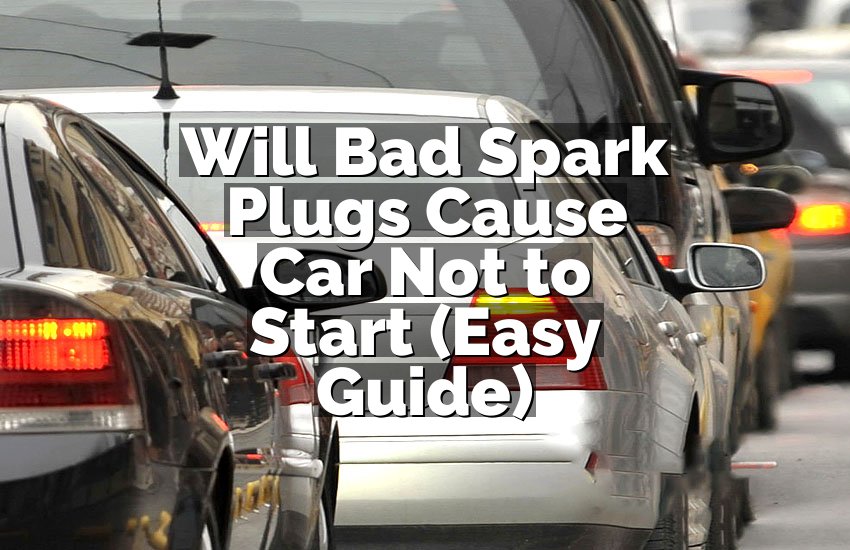Have you ever wondered what makes your car start every morning? One of the most important parts is the car battery. It’s amazing how such a small box under your hood can hold enough power to get your car going. Today, let’s talk about how many volts a car battery has when it’s fully charged. It’s simpler than you think, and I’ll walk you through everything you need to know.
What Is a Car Battery and How Does It Work?
What Does a Car Battery Do?
A car battery is like the heart of your car’s electrical system. It provides the power needed to start the engine and runs things like lights, radio, and even your car’s computer. Without a working battery, your car won’t start, and all those electric parts won’t work.
Inside the battery are chemicals that create electricity through a chemical reaction. When you turn the key or press the start button, the battery sends power to the starter motor, which helps turn the engine over. After the engine starts, the car’s alternator takes over, charging the battery while the car runs.
What Is Voltage in a Car Battery?
Voltage is a way to measure electrical power. You can think of voltage as the pressure pushing electricity through wires. Car batteries are usually measured in volts. When we say “how many volts,” we’re asking about the battery’s power level.
Most car batteries are 12 volts, but this is just the nominal voltage. The actual voltage can change depending on if the battery is charged or needs charging. A fully charged car battery is a bit more than 12 volts, and that’s what we’ll learn about soon.
How Does a Car Battery Get Charged?
Your car battery gets charged mainly by the alternator when the engine is running. The alternator is like a small generator attached to the engine. It produces electricity and sends some of it back to the battery to keep it full of power.
If the battery is low, the alternator fills it up while you drive. But if you only use your car for short trips or let it sit for a long time, the battery can lose its charge. That’s why sometimes your car won’t start, and the battery needs to be charged with a charger.
Why Knowing Voltage Matters
Knowing how many volts your car battery has can help you understand if it’s healthy or needs attention. If the voltage is too low, it might mean the battery is dead or failing. Too high might mean the charging system is not working right.
You can check the battery voltage with a simple tool called a multimeter. This small device can tell you the battery’s voltage and help you know if you need to charge or replace the battery. It’s a handy tool for any car owner!
How Many Volts Is a Car Battery When Fully Charged?
The Typical Voltage of a Fully Charged Car Battery
When a car battery is fully charged and resting (meaning the car is off and the battery hasn’t been used for a little while), it should show about 12.6 volts. This number means the battery is in good condition and ready to give your car the power it needs.
If the voltage is less than 12.4 volts, the battery might not be fully charged. A reading around 12.0 volts usually means the battery is low and needs charging. Below 11.8 volts is often a sign the battery is dead or damaged.
Why Is It 12.6 Volts?
Car batteries are made of six cells, and each cell produces about 2.1 volts when fully charged. When you multiply 2.1 volts by 6 cells, you get about 12.6 volts total. This is why a fully charged battery will almost always show around this number.
This voltage is the perfect level for your car’s system. If it’s lower, the battery doesn’t have enough power. If it’s higher, it might mean the battery is being charged too much, which can be harmful.
What Happens When the Battery Voltage Is Different?
If your battery shows less than 12.6 volts, the power inside is not full. This can happen if the battery is old, used a lot, or hasn’t been charged recently. A lower voltage means the battery may not start your car properly.
If the voltage is above 14 volts when the car is running, it usually means the alternator is charging the battery. But if it stays too high when the car is off, it can damage the battery.
How to Check Your Battery Voltage at Home
You don’t need to be an expert to check your battery voltage. All you need is a simple multimeter, which you can buy at an auto store or online.
First, make sure your car is off and the battery is resting. Then, set the multimeter to measure DC volts. Touch the red probe to the positive battery terminal and the black probe to the negative terminal. The number on the screen shows your battery voltage.
If it reads about 12.6 volts or more, your battery is healthy. If it’s less, you might want to charge the battery or have it tested by a professional.
How to Clean Your Car Battery to Keep It Healthy
Why Clean Your Car Battery?
Over time, car batteries can get dirty, especially around the terminals (the metal parts you connect cables to). Dirt and corrosion can build up and make it harder for electricity to flow. This can cause problems starting your car or reduce battery life.
Cleaning your battery is a simple way to keep it working well. It helps make sure the electricity flows smoothly and keeps the battery healthy for longer.
What You Need to Clean Your Battery
To clean your car battery, you’ll need a few things:
- Baking soda
- Water
- A small brush (an old toothbrush works great)
- Protective gloves and glasses (to keep safe)
- A cloth or paper towels
Baking soda is useful because it reacts with the corrosion (which is acidic) and helps clean it off safely.
Step-by-Step Guide to Cleaning Your Battery
First, make sure your car is turned off and the keys are out. Put on your gloves and glasses to protect your hands and eyes.
Next, mix a spoonful of baking soda with some water to make a paste. This will help you scrub the corrosion safely.
Then, dip your brush into the baking soda paste and scrub the battery terminals and cable ends gently. You’ll see the corrosion start to come off. If needed, add more paste.
After scrubbing, rinse the battery terminals with a little water to wash away the paste and dirt. Be careful not to get too much water inside the battery itself.
Finally, dry the battery terminals with a cloth or paper towels. Make sure everything is dry before reconnecting the cables.
How to Avoid Battery Corrosion in the Future
To help keep your battery clean longer, you can apply a thin layer of petroleum jelly or a special battery terminal protector spray. This stops air and moisture from causing corrosion.
Also, check your battery regularly, especially if you live in places with extreme weather. Cold and heat can make corrosion worse.
How to Fix a Car Battery That Is Not Fully Charged
Signs Your Battery Needs Charging or Fixing
If your car struggles to start, the lights are dim, or the battery voltage is low, your battery might need charging or fixing. Sometimes, the battery just needs a simple recharge, but other times it may need more work.
If you notice these signs, it’s a good idea to check the battery voltage with a multimeter first. This will help you decide what to do next.
How to Charge Your Car Battery Safely
Charging a battery is easy but needs to be done safely. You will need a battery charger, which you can buy at an auto parts store.
First, make sure the charger is unplugged and your car is off. Connect the charger’s red clamp to the battery’s positive terminal, and the black clamp to the negative terminal.
Then, set the charger to the right settings (usually a slow charge is best). Plug in the charger and turn it on. Charging times vary but usually take a few hours to fully charge.
When charging is done, turn off and unplug the charger, then carefully disconnect the clamps.
How to Jump-Start Your Car Battery
If your battery is dead and you need to start your car quickly, jump-starting is a good option. You’ll need jumper cables and another car with a working battery.
Park the working car close enough but don’t let the cars touch. Connect the red jumper cable to the dead battery’s positive terminal, then the other red clamp to the working battery’s positive terminal.
Next, connect the black jumper cable to the working battery’s negative terminal, and the other black clamp to a metal part of the dead car’s engine (not the battery).
Start the working car and let it run for a few minutes. Then try starting the dead car. Once started, carefully disconnect the cables in reverse order.
When to Replace Your Battery
If your battery won’t hold a charge or the voltage stays low even after charging, it might be time to replace it. Batteries usually last 3 to 5 years, but this depends on use and weather.
Replacing the battery is not difficult, but if you’re unsure, a mechanic can help. Always choose a battery that fits your car’s needs.
How to Take Care of Your Car Battery for Longer Life
Regular Checks and Maintenance
To keep your battery healthy, check it regularly. Look for dirt, corrosion, and loose cables. Clean the battery if you see corrosion and tighten any loose connections.
Check the battery voltage every few months with a multimeter, especially before winter or summer when weather can affect the battery.
Avoid Short Trips When Possible
Short trips don’t give your battery enough time to recharge. Try to drive your car longer or more often to let the alternator keep the battery full.
If you mostly take short trips, consider using a battery maintainer or trickle charger to keep the battery charged.
Keep Your Battery Secure and Dry
Make sure the battery is held firmly in place. A loose battery can get damaged by vibration. Also, keep the battery dry and avoid spilling any fluids on it.
If you notice any cracks or leaks, replace the battery right away. Leaking batteries can be dangerous.
Protect Your Battery from Extreme Temperatures
Extreme cold or heat can hurt your battery. If you live in a place with harsh winters, try to park your car in a garage or use a battery warmer.
In very hot places, shade and regular checks help protect the battery.
I hope this guide helps you understand car batteries better and how to keep yours working well for a long time.
Frequently Asked Questions (FAQs)
Is it normal for a car battery to have 12 volts?
Yes, it is normal for a car battery to show around 12 volts when it is not fully charged or resting. A fully charged battery should have about 12.6 volts. If it reads much less, the battery may be low or need charging.
Can a car battery voltage be too high?
Yes, if the voltage is too high (above 14.5 volts) when the car is off, it can mean the charging system is overcharging the battery. This can damage the battery over time and reduce its lifespan.
Do I need a multimeter to check my battery voltage?
You don’t have to have a multimeter, but it’s very helpful and inexpensive. A multimeter can tell you exactly how much voltage your battery has and help you know if it’s healthy or needs attention.
Is it safe to clean my car battery myself?
Yes, cleaning your car battery terminals is safe if you wear gloves and eye protection. Use baking soda and water to clean corrosion carefully, and avoid getting water inside the battery.
Can a car battery be jump-started if it is completely dead?
Most car batteries can be jump-started if they are not physically damaged. If the battery is too old or has a dead cell, jump-starting might not work, and the battery should be replaced.
Do I need to disconnect the battery before cleaning it?
You don’t always need to disconnect the battery before cleaning, but it’s safer to disconnect the negative terminal first to avoid any short circuits while cleaning.
Is it okay to leave a car battery charger connected overnight?
Many modern chargers are designed to be safe for overnight use and will switch to a maintenance mode once the battery is full. However, always check the charger instructions to be sure.
Can extreme weather affect how many volts my battery has?
Yes, cold weather can lower the voltage and make the battery less effective at starting the car. Hot weather can also shorten battery life by increasing corrosion and evaporation of battery fluids.


